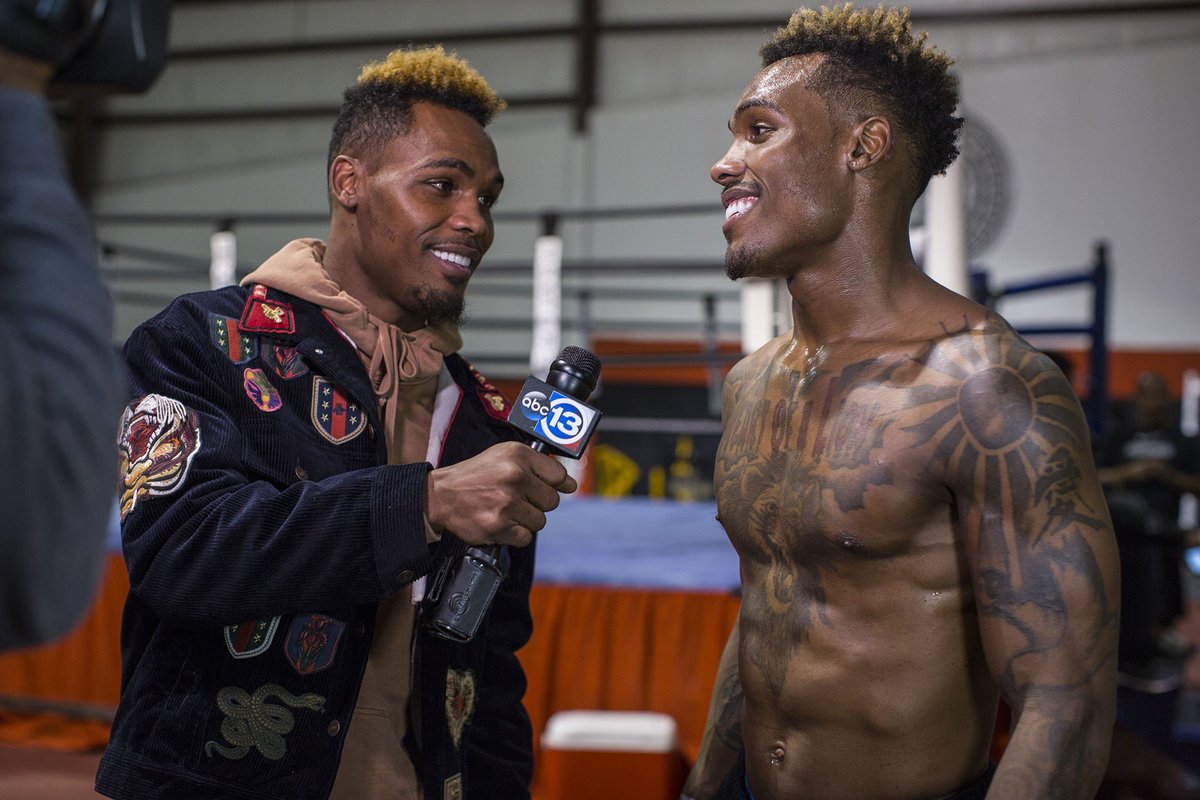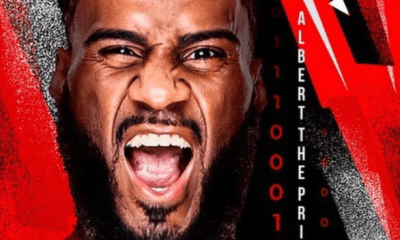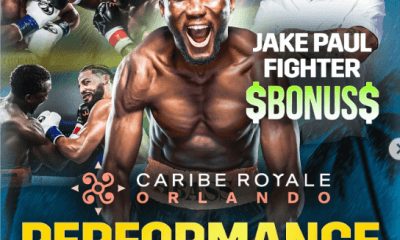Featured Articles
The Charlo Twins Are Heading Down Different Paths to Ring Renown

Throughout recorded history, mankind’s deep thinkers have always been fascinated by the living, breathing copies of one another that are identical twins. Psychologists have written scholarly books about their many shared traits, and paranormal researchers can cite literally thousands of examples of identicals that claim to know what their mirror image is thinking or feeling at a given moment.
All of which makes boxing’s Charlo twins, 29-year-olds Jermell and Jermall, such interesting case studies for probers of the human mind as well as fight fans. Seemingly separated only by one vowel in their first names, Jermell (31-1, 15 KOs), who is one minute younger, again appears only slightly earlier than Jermall (28-0, 21 KOs) when he takes on Jorge Cota (28-3, 25 KOs) in the PBC on Fox main event Sunday night from Las Vegas’ Mandalay Bay. Six nights later, on June 29, Jermall defends his WBC interim middleweight championship against Brandon Adams (21-2, 13 KOs) in the Showtime-televised marquee bout from the NRG Arena in the twins’ hometown of Houston.
But while those ring appearances come less than a week apart, that’s still a wider gap than their most recent bouts, which came on Dec. 22 of last year, at the Barclays Center in Brooklyn. Again fighting on the same card, as they occasionally have during their dual ascents to the borders of legitimate stardom, the matter of top billing that night was decided by a coin flip. Jermall won and thus was accorded the privilege of going on last, the slot usually reserved for the main event, while Jermell, the WBC super welterweight champ, served as his twin’s lead-in with a title defense against Tony Harrison.
This time, however, the Charlos did not enjoy their familiar success in tandem. Although Jermall retained his WBC interim middleweight championship with a wide unanimous decision over Matt Korobov, his mood at the postfight press conference was noticeably dampened as he sat alongside Jermell, who had been dethroned by Harrison on a close unanimous decision that more than a few observers thought might have gone the other way.
“There’s no way that (Harrison) won that fight,” Jermell said as he struggled to contain his emotions. “I don’t understand how they came up with those scores (116-112 and 115-113, twice). I didn’t just lose. I was robbed.”
Sunday’s opponent for Jermell was again to have been Harrison in the type of grudge match that always makes for compelling TV. But Harrison was obliged to withdraw when he injured his right ankle in training, opening the door for Cota to come in as a late replacement.
What the events of Dec. 22, 2018, did, maybe more than ever, was illustrate that the Charlos – who always will be as close as any boxing brothers have ever been, even closer than Vitali and Wladimir Klitschko, who look like twins although they aren’t and who at one time simultaneously held alphabet versions of the heavyweight championship – are traveling slightly different paths toward the same goal.
The variations are as stark and noticeable as their tattoos (Jermall has the well-inked chest while Jermell’s tats are more concentrated on his arms and shoulders), and as subtle as the stylistic modifications adopted by Jermell when he switched several years ago from veteran trainer Ronnie Shields, who still works with Jermall in the Houston area, to Dallas-based Derrick James.
And although both were world-rated 154-pounders at one time, Jermell has elected to remain a super welterweight while Jermall now campaigns as a full-fledged middleweight, eliminating any notion that the twins might one day have to fight one another, just as the Klitschkos vowed that they never would square off in a unification showdown.
But times and circumstances can change, even for identical twins who share not only the same genetic makeup, but often the same home environments, friends, clothes and, of course, secrets.
“I think our being twins has had a beneficial effect on both of us because of marketability,” Jermell said in 2016. “It’s one of the reasons we’ve been pushed the way we’ve been pushed. I think we always had it in our minds that someday it might turn into a business asset. We always got more attention because we’re twins. It was fun. We slept in the same bedroom all the way through high school.
“But, really, we are different. We like different cars, different kinds of music. I think the time has come for each of us to be recognized for our individual accomplishments.”
James, The Sweet Science’s 2017 Trainer of the Year who also is the chief second for IBF welterweight champ Errol Spence Jr., said it was inevitable that the twins would make the choice, as all twins eventually do, to stake out something that for each is his and his alone.
“Jermell breaking away, he kind of told me why,” said James, who would not elaborate. “Jermell and Jermall are always going to be extremely close, but they’re each becoming their own man. That doesn’t mean they’re totally splitting apart or doing fewer things together. I just think they’re trying to establish their own individuality within the dynamic of being identical twins.”
For Jermell, the goal in the near-future is to meet and defeat Harrison, thus setting right the injustice he continues to believe that was perpetrated upon him a half-year ago in Brooklyn. He said that in the moments after the 12th and final round had concluded and before the scorecards were read, Harrison whispered words of congratulations to him, an admission on the part of the Detroit fighter that he had been beaten. Harrison insists he said no such thing.
“He told me, `You did it. I can see why you’re a real champ,’” Jermell revealed at the time.
Jermell now insists he is fully focused on Cota, as it should be. Settling up with Harrison can stay on the back burner a while longer.
“I want to get him out of there,” Jermell said of his plans for Harrison’s stand-in. “This is a fight to show that I’m back and never really left. It was a quick change to Cota, but I’m always ready for anybody.”
For his part, Cota, a hard-punching Mexican, said he is inspired by the huge upset Mexican-American Andy Ruiz Jr. recently sprang in lifting Anthony Joshua’s IBF, WBA and WBO heavyweight title belts. He also disputes Jermell’s assertion that he was shafted in the fight against Harrison.
“For me, Harrison won that fight,” Cota said. “He threw better punches and landed more. A lot of people thought Jermell had won, but I saw it for Harrison.
“I am a demon in that ring. When other guys are in there, my punches scare them. Jermell is a good boxer, but I think that when he’s under pressure he doesn’t know what to do. I’m going to put pressure on him from the first bell and go right through him.”
In the back-and-forth jockeying to be recognized as the better of the boxing Charlos, it would seem that Jermall, with his interim WBC title and undefeated record, presently holds the upper hand. Although he calls Adams a “game opponent,” he is energized by fighting before a supportive home crowd in Houston and believes a victory, especially if it comes in emphatic fashion, could put him in position for a big-money, high-visibility shot at WBC/WBA/IBF ruler Canelo Alvarez. Like Jermell, he said he will not make the mistake of taking lightly the guy who’ll be in the other corner on June 23.
“I’m training like I’m training for Canelo,” Jermall stressed. “Brandon Adams is going to be on his A-game, but if he makes a wrong move it’s going to be a short night for him. The division is mine as long as I continue to do what I’m doing. I’m in a good place. I’m a force to be reckoned with in the 160-pound division.”
Check out more boxing news on video at The Boxing Channel
To comment on this story in The Fight Forum CLICK HERE
-

 Featured Articles3 weeks ago
Featured Articles3 weeks agoThe Hauser Report: Cinematic and Literary Notes
-

 Featured Articles4 weeks ago
Featured Articles4 weeks agoOscar Duarte and Regis Prograis Prevail on an Action-Packed Fight Card in Chicago
-

 Book Review3 weeks ago
Book Review3 weeks agoMark Kriegel’s New Book About Mike Tyson is a Must-Read
-

 Featured Articles1 week ago
Featured Articles1 week agoThe Hauser Report: Debunking Two Myths and Other Notes
-

 Featured Articles2 weeks ago
Featured Articles2 weeks agoMoses Itauma Continues his Rapid Rise; Steamrolls Dillian Whyte in Riyadh
-

 Featured Articles4 weeks ago
Featured Articles4 weeks agoRahaman Ali (1943-2025)
-

 Featured Articles4 weeks ago
Featured Articles4 weeks agoTop Rank Boxing is in Limbo, but that Hasn’t Benched Robert Garcia’s Up-and-Comers
-

 Featured Articles3 weeks ago
Featured Articles3 weeks agoKotari and Urakawa – Two Fatalities on the Same Card in Japan: Boxing’s Darkest Day




















